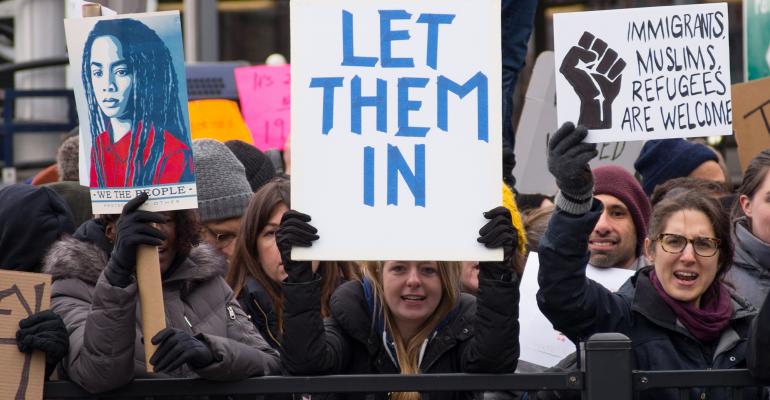Think about it. Your trade show layout probably gets a more thorough planning discussion than the President’s ham-handed attempt to improve the safety of U.S. borders with that first ill-conceived and poorly executed immigration ban.
The widespread confusion and anxiety in the first days after the executive order in January, followed by the protracted fight over the basic constitutionality of the President’s tactics, have had repercussions not only in the diplomatic arena but in a worsening perception of America and what it stands for.
And what that means for meetings professionals—especially those planning for internationally focused associations and global corporations—and the U.S. venues where they hold their events, is not good. Perception is critical to our industry. Remember the “AIG Effect”? That was a year-long industry downturn that started in mid-2008 when American International Group Inc. spent almost half a million dollars on an event at a luxury resort just days after receiving an $85 billion bailout from Congress. Sounds like an isolated incident, right? Well, that epic public relations disaster had far-reaching consequences as companies, most of which hadn’t accepted taxpayer bailouts, scurried to protect their reputations by cancelling meetings planned in resort settings.
The parallel to today’s situation isn’t direct, but just as perception was the root of many cancellations during the economic downturn, the impression that the U.S. is unwelcoming to Muslims and refugees (whether or not the ban is ever reinstated) is already having a negative effect on meetings. Just consider, for instance, the 6,600 international academics and counting who have signed a pledge to boycott U.S.-based conferences or the International Association for Dental Research, which just a week and a half after the ban had lost $42,000 on its March conference as a result of the executive order. Commenting on an article in the New York Times, B. Chris Brewster, president, Americas Region, International Life Saving Federation, wrote this: “If you sit on the board of directors of an international organization with members who are affected by the Trump travel ban, as I do, any aspirations you may have had to play host to a future meeting in the United States have evaporated.”
President Trump says he’s good for business, but he may be forgetting our business. He needs to click over to the Meetings Mean Business website to read the PwC study, “The Economic Significance of Meetings to the U.S. Economy.” Commissioned by members of the Convention Industry Council to fight the perception issues of 2008-2009, the report was updated in 2012, revealing that the meeting and convention industry contributes $280 billion in direct spending annually to the U.S. economy and makes a $115 billion annual contribution to the Gross Domestic Product.
He’d have to agree; that’s Yuuuge.




